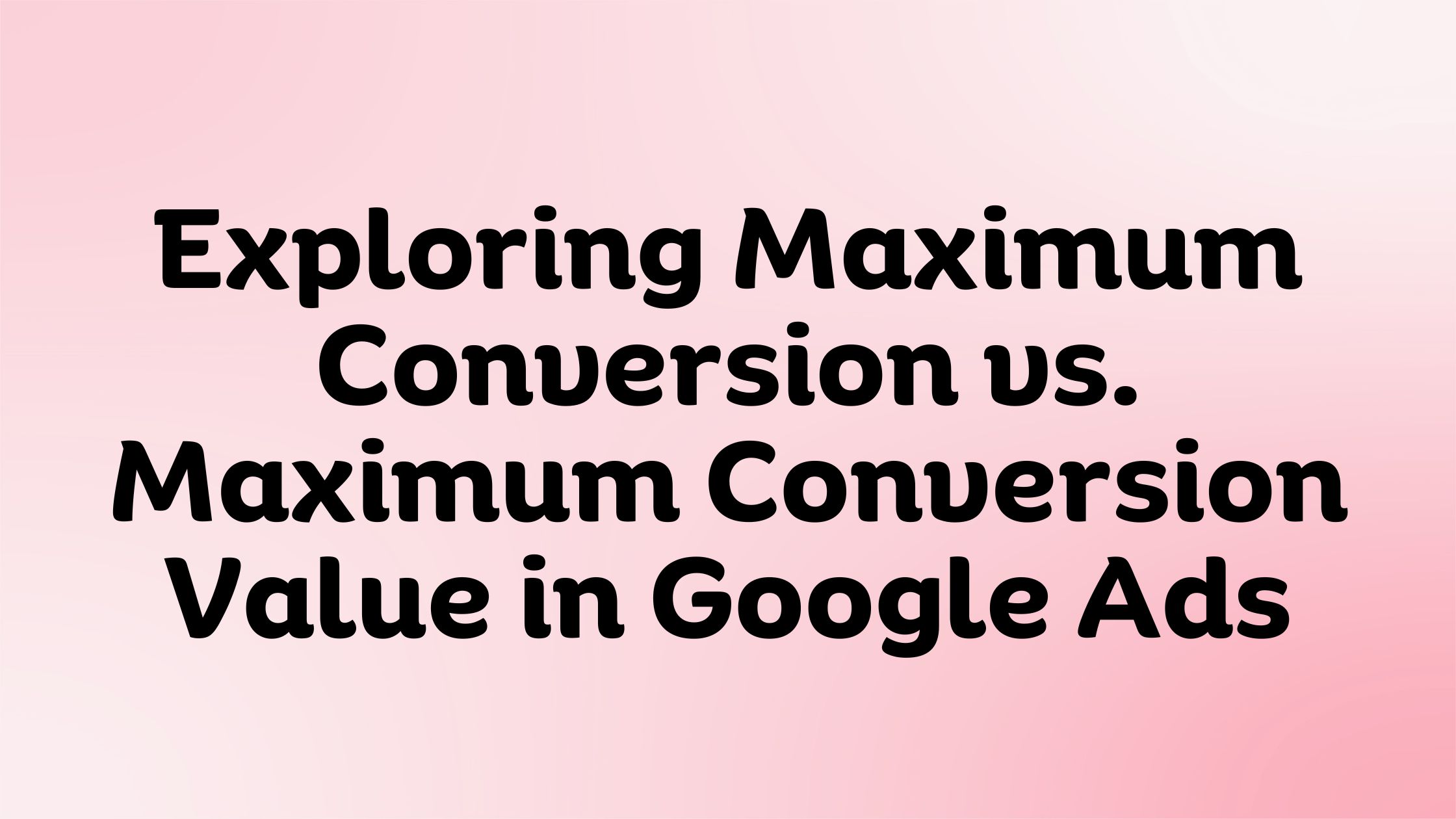In Google Ads, effective campaign optimization is key to meeting advertising goals, with Maximum Conversion and Maximum Conversion Value being two pivotal bidding strategies. Though they sound similar, their purposes differ significantly. Maximum Conversion focuses on achieving the highest number of conversions within your budget, ideal for campaigns where quantity of conversions is the goal. In contrast, Maximum Conversion Value aims to maximize the total monetary value of conversions, targeting higher-value outcomes. For instance, a campaign using Maximum Conversion might prioritize increasing app downloads, while Maximum Conversion Value could focus on attracting high-value purchases. Understanding these differences is crucial for selecting the right strategy in Google Ads to align with specific campaign objectives.
Maximum Conversion in Google Ads
Maximum Conversion in Google Ads is a bidding strategy tailored for advertisers aiming to maximize their number of conversions within a specified budget. When you select this strategy, Google Ads automatically adjusts your bids to help secure the highest possible number of conversions, whether that’s form submissions, sales, or sign-ups. This approach is particularly effective when your campaign’s primary focus is on increasing the volume of conversions, irrespective of their individual monetary value. By prioritizing the quantity of conversions, Maximum Conversion is an ideal choice for campaigns where achieving a high number of user actions is more important than the specific value of each action. This makes it a suitable strategy for businesses looking to expand their customer base, increase engagement, or boost a particular aspect of their online presence.
Example:
Imagine you run a digital marketing campaign for a software company that aims to maximize the number of free trial sign-ups. By selecting Maximum Conversion as your bidding strategy in Google Ads, your campaign will focus on securing as many sign-ups as possible, irrespective of whether these leads convert to high-value customers later. The algorithm adjusts your bids to target users most likely to complete the sign-up process within your budget constraints.
Maximum Conversion Value in Google Ads
Maximum Conversion Value in Google Ads is a strategy that focuses on maximizing the total monetary value of conversions within a specified budget. This approach is particularly beneficial when there’s a significant variation in the value of each conversion and when the primary objective is to target higher-value conversions. Unlike the Maximum Conversion strategy, which aims to increase the sheer volume of conversions, Maximum Conversion Value directs your budget toward attracting conversions that offer greater financial value.
This strategy is ideal for businesses where certain actions by customers are more profitable than others. For instance, in an e-commerce setting, the goal might be to attract purchases of higher-priced products rather than a larger quantity of lower-priced items. By optimizing your bids with the Maximum Conversion Value strategy, Google Ads focuses on attracting customers who are more likely to make substantial purchases, ensuring that your advertising spend is allocated to driving the most lucrative outcomes for your business. This approach is key for companies looking to optimize their return on investment from their digital advertising efforts.
Example:
Now, let’s say the same software company wants to focus on maximizing revenue from its paid subscription plans rather than just increasing sign-up numbers. By choosing Maximum Conversion Value in Google Ads, the campaign will target users more likely to choose higher-tier subscription plans. The bidding strategy will prioritize potential high-value customers, ensuring that the campaign budget is spent on acquiring conversions that bring in more revenue.
Key Takeaways
The distinctions between Maximum Conversion and Maximum Conversion Value in Google Ads are critical for advertisers to understand in order to optimize their campaigns effectively.
Goal Orientation:
- Maximum Conversion primarily targets increasing the total number of conversions, making it ideal for campaigns where the sheer quantity of user actions is the key objective.
- Maximum Conversion Value centers on the total monetary value of the conversions, perfect for campaigns where the focus is on the financial worth of each conversion.
Ideal Use:
- Maximum Conversion is best suited for campaigns aiming for a high volume of conversions, such as sign-ups or downloads, where the individual value of each conversion is not the main focus.
- Maximum Conversion Value is more appropriate for campaigns where the quality or monetary value of each conversion is crucial, such as in high-value product sales or services.
Bidding Strategy:
- With Maximum Conversion, Google Ads automatically manages bids to maximize the number of conversions, adjusting bids to tap into the highest possible conversion opportunities within the budget.
- In Maximum Conversion Value, the bidding is optimized to focus on conversions that bring the highest monetary value, balancing both bid amount and conversion value.
Budget Allocation:
- Maximum Conversion involves distributing the budget in a way that maximizes the conversion count, often leading to a greater number of lower-value conversions.
- Maximum Conversion Value allocates the budget towards conversions with a higher revenue potential, focusing on maximizing the financial returns from the set budget.
Impact on ROI:
- Campaigns using Maximum Conversion might see a higher volume of conversions but with potentially lower individual values, affecting the overall return on investment.
- Maximum Conversion Value strategy, by focusing on the monetary value of conversions, aims to achieve a higher overall ROI, targeting conversions that contribute more significantly to revenue.
Choosing between Maximum Conversion and Maximum Conversion Value in Google Ads hinges on your campaign goals. If your focus is on driving a higher number of conversions, Maximum Conversion is the way to go. However, if you’re looking to maximize revenue or the quality of conversions, Maximum Conversion Value should be your choice. Understanding this distinction allows you to tailor your Google Ads campaigns effectively to meet your specific business objectives.






